Discover Barcelona: City Break Holidays
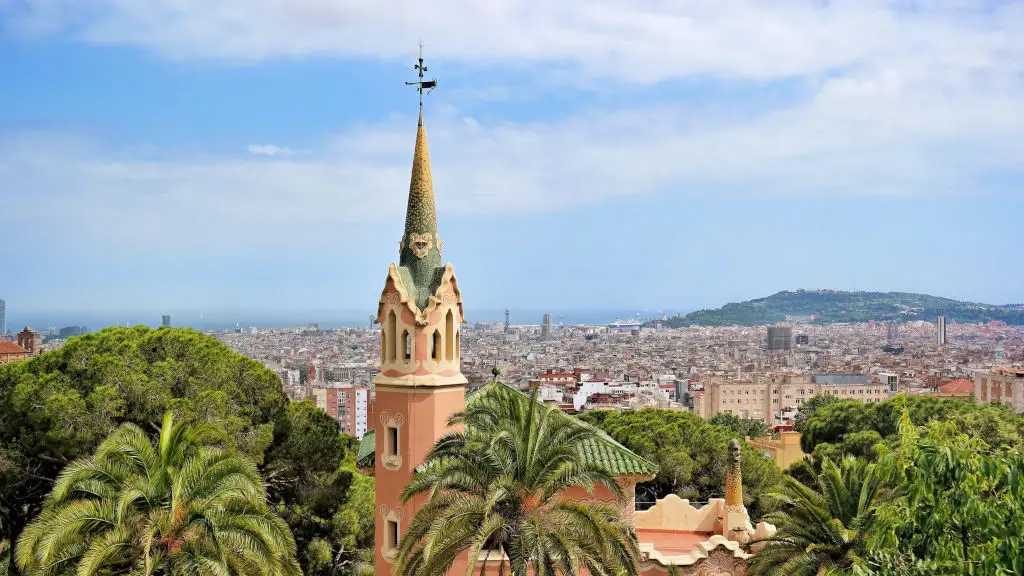
A city near the ocean, near your heart
If you're a beach bug and an urban adventurer with a taste for culture, then Barcelona city breaks are right up your alley. The lively metropolis on the Mediterranean coast has all the vibrant culture, great Spanish food, splendid architecture and exciting nightlife you could ever want. Barcelona is so close to the sea that the lovely beaches are right at the city's doorsteps, especially during Barcelona Bank Holidays.
Usually, it's either the beach or the mountains for tourists, and only a smaller number visit inland urban regions on their holiday. But what if you could have your cake and eat it, too? Bathe on beautiful beaches and hike up the hills? Are you looking for exciting nightlife and amazing architecture to admire, as well as thrilling football games to enjoy?
CONTENTS
- 1. Barcelona city break highlights
- 2. La Sagrada Família
- 3. Poble Espanyol
- 4. Barcelona Cathedral
- 5. A blast: The Magic Fountain of Montjuïc
- 6. Montjuïc Castle
- 7. Casa Milà (La Pedrera)
- 8. On the move in Barcelona
- 9. Fly from the UK to Barcelona
- 10. Barcelona: Weather and climate
- 11. Bank Holidays Barcelona (2023)
- 12. Bank Holidays Barcelona (2024)
- 13. More hot Barcelona topics
Barcelona city break highlights
Barcelona city holidays are a favourite with British tourists. It's one of the most visited cities in Europe, and was named the number one destination for city breaks around the world by TripAdvisor. But why all the fuss? Barcelona is absolutely stunning, has lots to do and an outstanding environment in which to enjoy yourself. If you've ever wanted to go on holiday, here are some highlights to keep in mind while you're there.
If you plan to visit Barcelona soon, here are some things you shouldn't miss.
La Sagrada Família
Hurry! Be quick! 140 years of church construction are coming to an end!!
No, seriously: The Sagrada Família, this astounding, monumental and still unfinished Roman Catholic Church will be finished… sometime in the not-so-near future… A finish date has been set, and there are plans to have the world-famous church completed by 2026. This would be in time to celebrate the centennial of Antoni Gaudí's death, but there might be a delay (again) due to the Covid-19 pandemic.

The construction of this monumental church started in 1882 when architect Gaudí was 31 years old. He died in 1926 when only a quarter of the church had been finished. Gaudi devoted 43 years of his life to his architectural masterpiece, and he is reported to have said: "My client is not in a hurry."
Why visit La Sagrada Família?
You don't have to be an avid churchgoer to see how remarkable this building is. The floor plan of the church is as traditional as can be: a Latin cross with five naves. The building's most striking features are its massive scale and its individualistic style. Every stone, every window, pillar, and spire that rises from this “classical” foundation is designed as something unusual and unique, awe-inspiring and ornate. This goes far beyond Western European church tradition.
The Sagrada Família (or, to be more precise: The Basílica i Temple Expiatori de la Sagrada Família) is one of Europe's most important examples of modern architecture. As such, it has become more than just another Barcelona church — it's a city's main attraction and a cathedral visited by thousands of tourists every year.
You should come, too, to admire both its beauty and uniqueness.
Where is the main entrance to the Sagrada Família?
The visitors' entrance of La Sagrada Família is located at Carrer de la Marina, 253, 08013 Barcelona, Spain.
Get directionsSince Covid-restrictions apply, it is advisable to buy tickets online before visiting. Family tickets, "skip-the-line" tickets, guided tours and audio guides are available at the official Barcelona website.
Other Attractions near La Sagrada Família
You've made the trip to the Sagrada Família and you have some spare time at hand? There are many places of interest near the Sagrada Família. As Barcelona is a beautiful and fairly walkable city, you can easily have your city break Barcelona on foot.
| To | Direction | Duration |
|---|---|---|
| Park Güell | North-west | 30 min |
| Casa Milà | South-west | 19 min |
| Torre Agbar | East | 20 min |
| Placa de Catalunya | South | 30 min |
| Barcelona Cathedral | South | 36 min |
Poble Espanyol
The Poble Espanyol is an open-air miniature imitation of Spain. More than 100 buildings have been carefully researched, chosen and replicated on-site. The "Poble" aims to showcase the different regions of the country, and it was originally constructed for the World Exposition of 1929.
Miniature Spain
If you don't have the time or money to travel around Spain, this is your chance! Here, you can get an impression of regional architecture, landscape, culture, and craftsmanship.
Visit the Poble Espanyol — it's like walking through a hundred villages at once in a few hours.
Plus: You get a great view of Barcelona, and lots of space to explore (ca. 40,000 m)!
Where is the Poble Espanyol?
The Poble Espanyol is near the Montjuïc area of Barcelona, a few hundred metres away from the famous Fountains of Montjuïc. It's easy to get there from anywhere in the city. Just hop on one of the many buses that go from Plaça de Catalunya or Passeig de Gràcia up to Montjuïc Castle.
Get directionsWhat are the highlights of the Poble Espanyol?
The Poble Espanyol features a museum of modern art and shops selling traditional Spanish products such as olive oil and jamón ibérico. Restaurants are serving traditional food, and there is the occasional live music performance. You can visit artisan workshops and watch street performers doing everything from folklore dancing to juggling fire torches.
Be sure to check beforehand for special events and opening hours. Some shops and restaurants are closed during the low season.
Where history, culture, and leisure come together: Poble Espanyol.
Barcelona Cathedral
As you stroll through Barcelona's beautiful Barri Gòtic (Gothic Quarter) in the summer heat, you will undoubtedly yearn for a shaded spot and some peace and quiet.
Then why not head over to the Pla de la Seu?
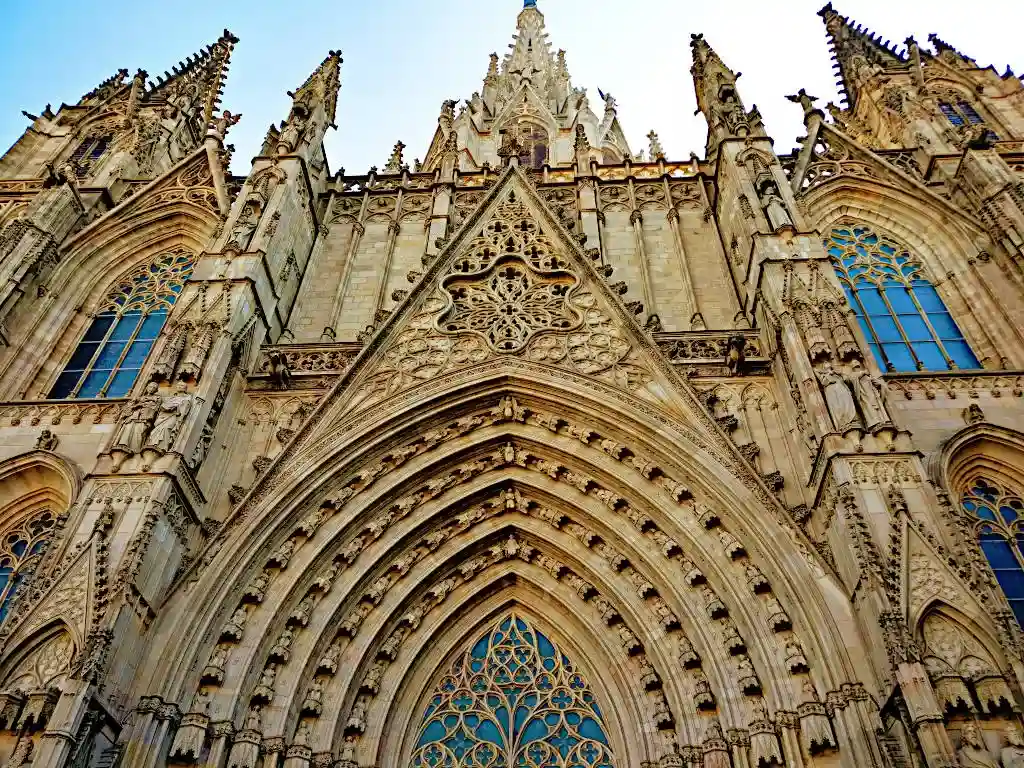
Cross the lively square and enter the Cathedral of Barcelona (or: Cathedral of the Holy Cross and Saint Eulalia).
A place of contemplation and tranquillity
Solid, thick walls of bare stone and high ceilings welcome the visitor and shut out the hustle and bustle of the street.
Tall stained-glass windows cast three-panelled rays of soft-coloured light. Be ready to be amazed from the moment you set foot into this sacred place (after paying a moderate entrance fee).
Once inside, take in the strong sense of history that pervades the Cathedral. It was built upon an 11th-century Romanesque church, and the main construction took place between the 13th and 15th centuries.
The cathedral displays the typical Catalan Gothic style: High-vaulted ceilings and a Latin cross floor plan. Still, a few peculiarities are adding to the special character of Barcelona Cathedral.
An unexpected highlight: A cloister, a well and 13 geese
Next to the main building is a cloister with a shaded cathedral garden where there is a fountain (the "Well of the Geese"), palm trees and (surprise!) 13 white geese.
The gees and their number are a peculiar reminder of Saint Eulalia, an early Christian martyr. She, according to tradition, was 13 years old when she suffered martyrdom. Her mortal remains lie buried in the vaulted crypt of the cathedral.
Barcelona Cathedral not only lifts your spirits. You can even go up to the roof of the church via a small elevator and flight of stairs. Take in a 360 view of Barcelona's skyline from this vantage point. Feast your eyes on the beautiful hinterland and the coastline.
Where is the Barcelona cathedral located?
Get directionsA blast: The Magic Fountain of Montjuïc
The Magic Fountain of Montjuïc is a spectacular fountain display located on top of Montjuïc hill overlooking Barcelona. It's close to the Poble Espanyol and the Palau Nacional and offers a marvellous combination of water, music, and light. It was built in 1929 for the World Exposition and restored in 1992.
The fountain display consists of thousands of jets that shoot hundreds of gallons of water up to 80 metres into the air. The water then falls back down into the basins below, creating beautiful rainbows as it does so. What a magnificent display of colours, lights and music!
The show lasts for about an hour and begins late in the evening to benefit from the setting sun's waning rays and dusk, emphasizing the colour display.
A special outdoor attraction, the fountain display is particularly recommendable during hot balmy summer evenings. Plus: It's a free event! Thus, it is very popular among tourists and locals alike.
If you are planning a visit to Barcelona, make sure you get there early. Especially in the summer, the fountains are very popular with tourists and locals, so it can get pretty crowded when thousands of people are watching.
For the latest information on show times and choreography, visit the official Barcelona Website.
Montjuïc Castle
The Castell de Montjuïc sits atop Montjuïc hill high above Barcelona, overlooking the sea, the harbour, and the city.
The 17th-century castle has lived through turbulent times. The fortress has been a garrison and a site where executions took place. It's been a military prison, and you can still see the prisoners' graffiti in the dungeons. It's been a focal point of many national and pan-European conflicts through the centuries. The role that the castle played in the history of Spain/Barcelona was sometimes a sombre one.
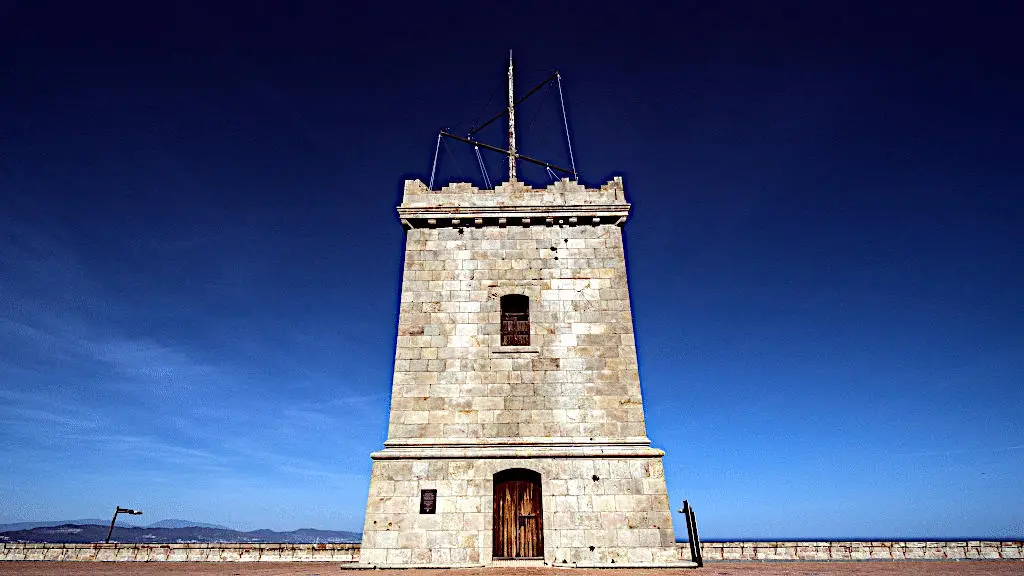
Nowadays, it's a peaceful tourist attraction with a rather infamous past, but with breathtaking views of Barcelona.
Montjuïc Castle features a moat, an entrance bridge, a parade ground, a terrace and a square watchtower with great views of the landscape and Barcelona skyline.
You can get guided tours through the castle, and audio guides are also available. You might want to check out the temporary exhibitions by visiting the Montjuïc Castle website.
How to get to Montjuïc Castle?
You can get to Montjuïc Castle on foot (it takes 20-25 minutes since the road up Montjuïc Hill is quite steep), on a bike (which is a sustainable alternative) or by bus (take line 150). Or you can avoid the sweat altogether and take a fabulous 10-minute gondola ride, offered by the Montjuïc cable car (the Telefèric de Montjuïc). This is an unbeatable option — it offers the best all-around view of Barcelona you can get.
Start your cable car journey at the Parc Montjuïc stop (Avinguda de Miramar 30). From there, the cable car takes you to the Castle while offering a bird's-eye view of the majestic skyline as you gently glide up (or down).
Get directionsCasa Milà (La Pedrera)
Have you ever been to a UNESCO World Heritage building that had been called a “quarry” by contemporaries? That had its windows likened to "dark holes through which all manner of creatures crawl in and out"? That had its wrought-iron balconies compared to "dried cod tails"? 1
Welcome to Casa Milà!
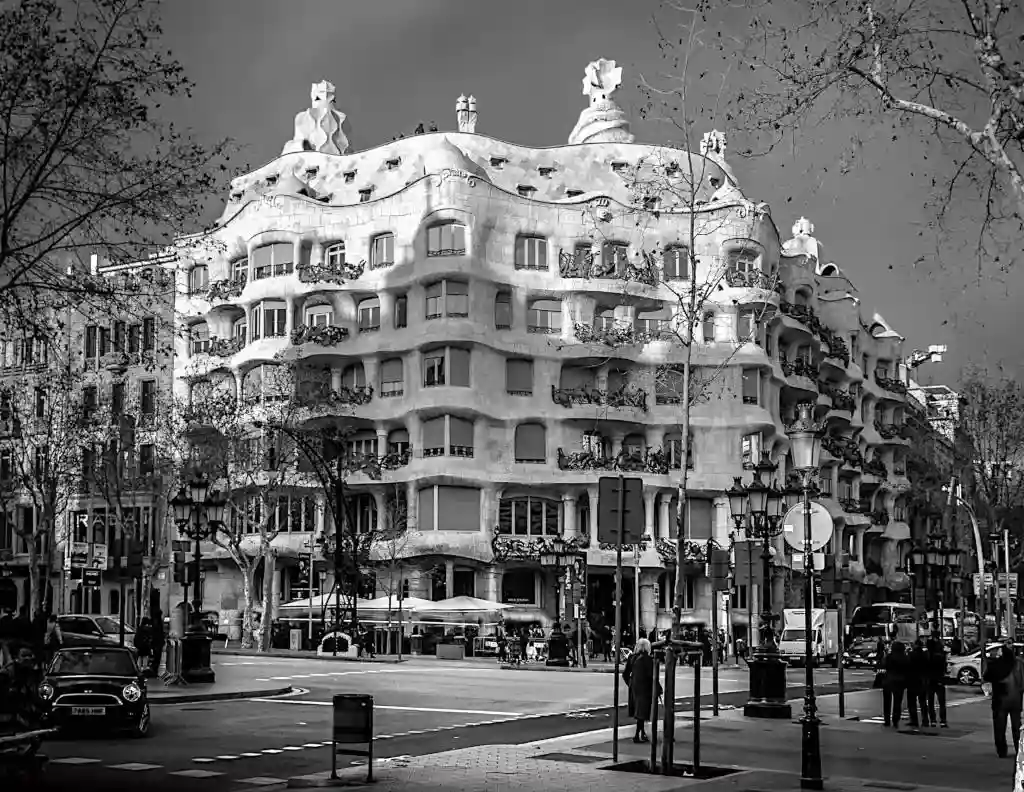
Designed by Catalan visionary architect Antoni Gaudí (1852-1926) in a nature-inspired, organic style, Casa Mila is just as fascinating as the Sagrada Familià, Casa Battló and Park Güell.
A bit of Casa Milà history
In 1905, a wealthy couple (Pere Milà and Rosario Segimon) commissioned Gaudi to design a spacious, multi-level building. Earlier, they had acquired a 2,000 m corner plot on Paseo de Gracia, 92. There, they wanted a block of spacious flats to be built to live on the main floor and rent the rest of the house.
Gaudí designed two blocks of 8 flats each, connected by two large inner courtyards.
The building consists of eight floors plus a roof terrace with chimneys and ventilation towers turned into sculptures, reminding today's visitors of sci-fi-mediaeval knights turned to stone.

Casa Mila in the eyes of the public
As Casa Mila was nearing completion in 1910/11, the sculpture-like building and its wave-like facade attracted more and more attention. But the public reaction was not always favourable…
Satirical drawings appeared in daily newspapers. The Suplemento Illustrado of El Diluvio, for example, commented on (or, rather, mocked) the building's extravagant facade, portraying a “phantasmagorical building” and comparing the ventilation towers to a "sinister pyramid of skulls".1
Casa Mila looked wildly alive and organic to Barcelonians — they stared at a building in which stone and iron and tiles took on organic forms and refused to be arranged in straight lines.
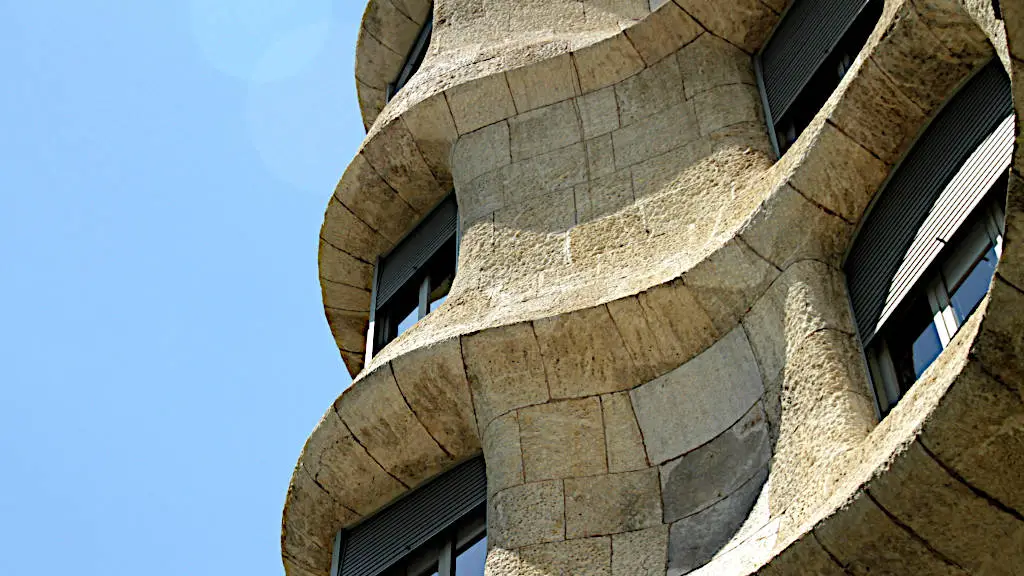
What makes Casa Mila so special?
Casa Milà is an extraordinary example of Gaudi's experimental but functional architecture. It's a perfect display of Gaudi's creative genius. Besides a unique exterior, he also introduced structural innovations, turning it into an architectural jewel and a work of art at the same time.
UNESCO declared Casa Milà a World Heritage site in 1984.
Interior innovations
- A free-plan floor without load-bearing walls
- An underground garage for coaches and cars (remember: this was built around 1910)
- A spectacular rooftop terrace, with curved, organic shapes for the ventilation towers and the La Pedrera chimneys
- Brick arches and vaults in the attic
Exterior innovations
- The facade of Casa Milà is made up of undulating stone slabs that are held together by metal brackets and decorated with wrought ironwork balconies
- Wrought-iron balconies, made of scrap metal and cast into organic shapes
Present use
Today, Casa Mila is the home and headquarters of the Fundacio Catalunya La Pedrera_, which is responsible for the management of the building. The foundation also organizes exhibitions and other cultural activities.
There are lots of creative and unusual options to discover Casa Mila.
Tours range from self-paced explorations with a free audio guide to guided tours with mixed reality glasses. Tours are taking place at night, or you can get exclusive access to the building before the house is opened to the public.
What's the best time to visit?
Currently, Casa Milà is open every day from 9:00 am until 8:30 pm. Get there early to beat the crowds, for example with a "La Pedrera Exclusive" tour that starts at 8:00 am.
Address of Casa Milà
Passeig de Gràcia, 92 08008 Barcelona
Get directionsLa Pedrera tickets & official website
Yes, a visit to Casa Mila can be rushed and done in about one hour — if you're a cold-hearted rationalist in love with straight lines. Way better to take your time, soak in every little detail, stroll through the stairwell and the furnished flats, visit the Warrior rooftop, the brick arches of the “Whale” attic, the museum, and everything else.
Better book your tickets online in advance, so you can jump the queue.
On the move in Barcelona
In Barcelona's city centre, shopping and culture are well within reach.
Full of breathtaking architecture and looking back on 2000 years of history, countless sights can be explored on foot. You can also take a bus, metro, or tram with the Barcelona Card Express ticket. It is valid for 2 days and comes with unlimited travel on public transport. An additional plus: You'll get discounts at museums and city sights. The ticket costs around €20.
Fly from the UK to Barcelona
There are plenty of direct flights from UK airports to popular destinations in Spain. Madrid Airport and Barcelona's El Prat Airport are the busiest airports in Spain. They are both at the world's Top20 when it comes to the number of passengers. London Airports (Gatwick, Heathrow, Stansted and Luton), as well as Manchester, are the top departure airports for flights to Barcelona. But there are also good cheap and direct flights available from Belfast, Edinburgh and Glasgow.
Barcelona: Weather and climate
Think "sunshine" when you think of Barcelona. And add a light breeze to that image…
Barcelona has a Mediterranean climate, which means warm and sunny weather with mild winters.
Barcelona is a sunny city, with summer starting early (late May/early June) and fading rather late into autumn at the beginning of October.
During these long summer months, there is a good chance that the sun will shine for an average of 10 hours a day. Pay particular attention to skin protection (sun cream!) during June, July, and August due to higher ultraviolet radiation and proximity to the sea.
July and August are the hottest months in Barcelona, with temperatures averaging above 25 °C (77 °F). The sea also heats up during these months, so there is always the possibility of occasional warm rain.
In autumn and spring, temperatures tend to be moderate. So if you like it a little less hot, this is the best time to travel. Barcelona bank holidays in April and May are always a good occasion for a perfect city break Barcelona.
Travellers should expect more rain in September and October — these are the rainiest months.
Last year's average temperatures
| Temp | J | F | M | A | M | J | J | A | S | O | N | D |
|---|---|---|---|---|---|---|---|---|---|---|---|---|
| Maximum | 18 | 18 | 20 | 22 | 28 | 33 | 34 | 35 | 30 | 25 | 22 | 21 |
| Minimum | -1 | 3 | 3 | 4 | 9 | 14 | 15 | 18 | 15 | 9 | 1 | 1 |
Bank Holidays Barcelona (2023)
| Date | Weekday | Barcelona Holiday 2023 |
|---|---|---|
| 6 January | Thursday | Epiphany / Three Kings' Day |
| 7 April | Friday | Good Friday |
| 10 April | Monday | Easter Monday |
| 1 May | Monday | Labour Day |
| 5 June | Monday | Local holiday |
| 24 June | Saturday | Sant Joan / Midsummer solstice |
| 15 August | Tuesday | Assumption of Mary |
| 11 September | Monday | Catalan National Day |
| 25 September | Monday | Local holiday |
| 12 October | Thursday | Spanish National Holiday |
| 1 November | Wednesday | All Saints' Day |
| 6 December | Wednesday | National Day of Spain |
| 8 December | Friday | Feast of the Immaculate Conception |
| 25 December | Monday | Christmas |
| 26 December | Tuesday | Boxing Day |
Bank Holidays Barcelona (2024)
| Date | Weekday | Barcelona Holiday 2024 |
|---|---|---|
| 1 January 2024 | Sunday | New Year's Day |
| 6 January 2024 | Friday | Epiphany |
| 29 March 2024 | Friday | Good Friday |
| 1 April 2024 | Monday | Easter Monday |
| 1 May 2024 | Wednesday | Labor Day |
| 20 May 2024 | Monday | Whit Monday |
| 24 June 2024 | Monday | St. John's Day |
| 15 August 2024 | Thursday | Assumption of Mary |
| 11 September 2024 | Wednesday | National Day of Catalonia |
| 24 September 2024 | Tuesday | La Mercè |
| 12 October 2024 | Saturday | Hispanic Day |
| 1 November 2024 | Friday | All Saints' Day |
| 6 December 2024 | Friday | Constitution Day |
| 25 December 2024 | Wednesday | Christmas Day |
| 26 December 2024 | Thursday | St. Stephen's Day |
More hot Barcelona topics
-
Fundació Catalunya La Pedrera: La Pedrera's untold stories. Caricatures mocking the building ↩︎ ↩︎